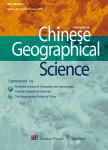Co-occurrence Patterns of Above-ground and Below-ground Mite Communities in Farmland of Sanjiang Plain, Northeast China
Co-occurrence Patterns of Above-ground and Below-ground Mite Communities in Farmland of Sanjiang Plain, Northeast China作者机构:Key Laboratory of Remote Sensing Monitoring of Geographic EnvironmentCollege of Heilongjiang ProvinceHarbin Normal University Northeast Institute of Geography and AgroecologyChinese Academy of Sciences
出 版 物:《Chinese Geographical Science》 (中国地理科学(英文版))
年 卷 期:2014年第24卷第3期
页 面:339-347页
核心收录:
基 金:Under the auspices of National Natural Science Foundation of China(No.41101049,40601047,41371072,31101617,41171047) China Postdoctoral Science Foundation(No.2012M511361) Excellent Youth Scholars of Northeast Institute of Geography and Agroecology,Chinese Academy of Sciences(No.DLSYQ2012004) Fund for Distinguished Young Scholar of Harbin Normal University(No.KGB201204) Scientific Innovation Project for Doctoral Candidate of Harbin Normal University(No.HSDBSCX2012-07)
主 题:above-ground mite below-ground mite mite communities co-occurrence patterns interspecific competition species pairassociations
摘 要:One of the fundamental questions in community ecology is whether communities are random or formed by deterministic mechanisms. Although many efforts have been made to verify non-randomness in community structure, little is known with regard to co-occurrence patterns in above-ground and below-ground communities. In this paper, we used a null model to test non-randomness in the structure of the above-ground and below-ground mite communities in farmland of the Sanjiang Plain, Northeast China. Then, we used four tests for non-randomness to recognize species pairs that would be demonstrated as significantly aggregated or segregated co-occurrences of the above-ground and below-ground mite communities. The pattern of the above-ground mite commu- nity was significantly non-random in October, suggesting species segregation and hence interspecific competition. Additionally, species co-occurrence patterns did not differ from randomness in the above-ground mite community in August or in below-ground mite com- munities in August and October. Only one significant species pair was detected in the above-ground mite community in August, while no significant species pairs were recognized in the above-ground mite community in October or in the below-ground mite communities in August and October. The results indicate that non-randomness and significant species pairs may not be the general rule in the above-ground and below-ground mite communities in farmland of the Sanjiang Plain at the fine scale.



